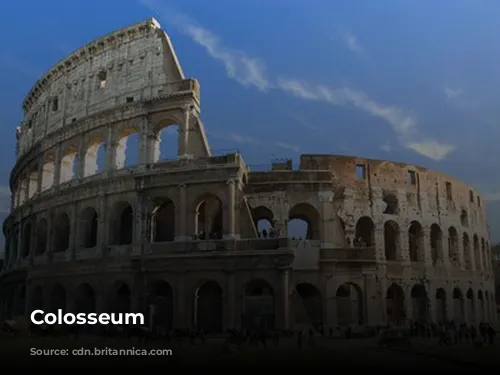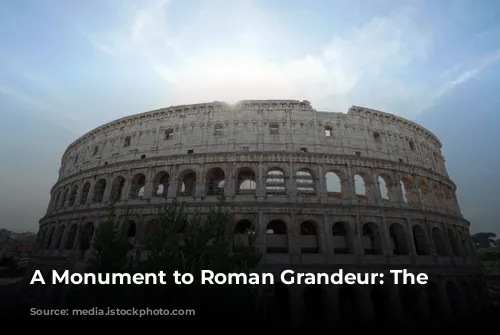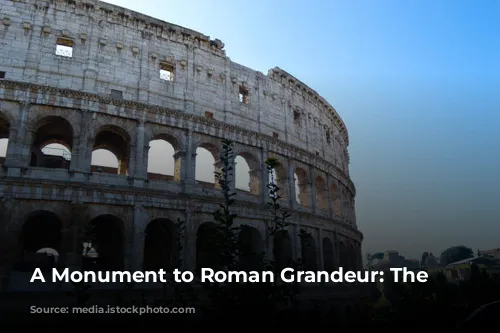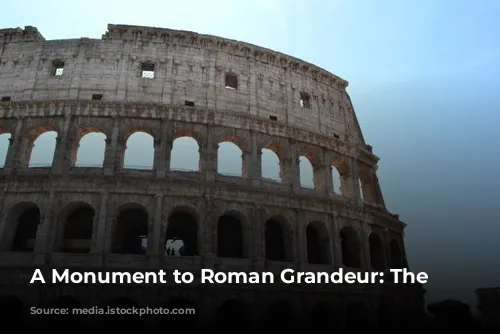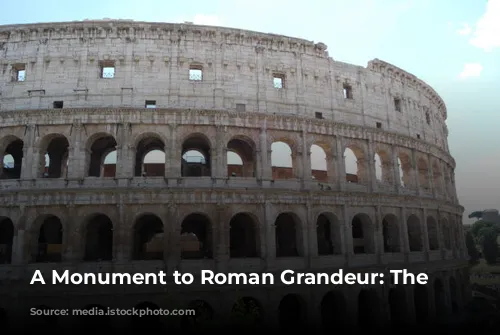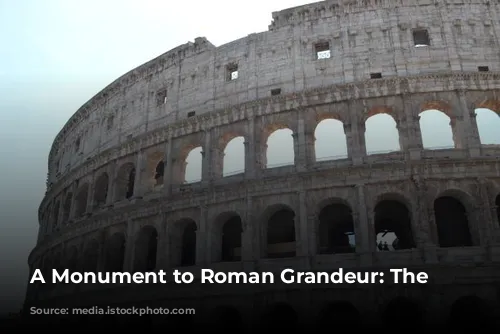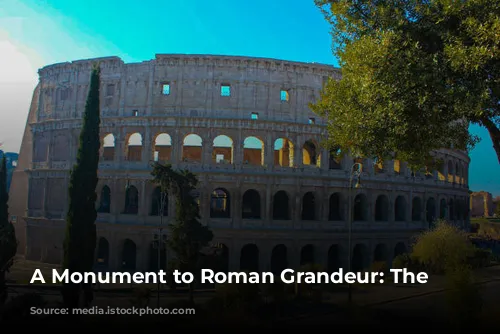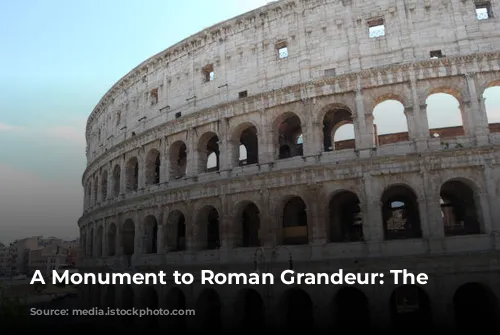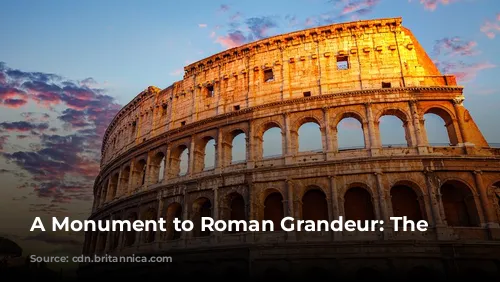The Colosseum, a majestic structure standing as a testament to the ingenuity of the ancient Romans, is a towering symbol of their architectural and engineering prowess. This remarkable amphitheater, one of the few mostly intact structures from the Roman Empire, continues to enthrall visitors from around the world. The Colosseum is not just a historical landmark; it also generates substantial tourism revenue for the Italian government. In 2018, the Colosseum, the Roman Forum, and the Palatine Hill together attracted a record-breaking number of tourists, generating more than $63.3 million (€53.8 million), making it the most visited tourist attraction in Italy.
A History of Transformation: From Arena to Fortress
The Colosseum’s journey through time is a captivating tale. After the fall of the Western Roman Empire, the once-grand arena fell into a state of disrepair. During the 12th century, the Frangipane and Annibaldi families, prominent Roman families, transformed the Colosseum into their stronghold, using its imposing walls for protection. In the late 15th century, Pope Alexander VI, seeking building materials, allowed the Colosseum to be used as a quarry. For over a thousand years, the Colosseum suffered neglect and degradation. Fortunately, in the 1990s, state-funded restoration efforts were initiated to revive this iconic structure.
A Symbol of Imperial Might: The Colosseum’s Origins
The construction of the Colosseum was a deliberate effort by the Roman emperors to revitalize Rome after the turbulent year of the four emperors in 69 CE. Emperor Vespasian, like his predecessors, envisioned the Colosseum as a center of entertainment, a place to host thrilling gladiator fights, exciting animal hunts, and even elaborate mock naval battles. The Colosseum was intended to be a spectacle, a symbol of Rome’s imperial power.
A Legacy of Labor: Construction and Dedication
Construction of the Colosseum commenced under Emperor Vespasian between 70 and 72 CE. The magnificent structure was dedicated in 80 CE by Vespasian’s son and successor, Emperor Titus. The Colosseum’s fourth story was added by Emperor Domitian in 82 CE, completing the grand design. It is important to note that the arena was financed by the spoils from Titus’s conquest of Jerusalem in 70 CE. Sadly, the construction of the Colosseum was built by enslaved Jews from Judea, a grim reminder of the Roman Empire’s brutality.
A Colossal Structure: Architectural Marvel
The Colosseum, also known as the Flavian Amphitheatre, is an elliptical structure built with a combination of stone, concrete, and tuff. This architectural masterpiece stands four stories tall at its highest point, spanning an impressive 620 by 513 feet (189 by 156 meters). It could accommodate a staggering 50,000 spectators, making it one of the largest amphitheaters ever built. The Colosseum was renowned for its gladiatorial combat, where skilled warriors fought for the entertainment of the masses.
A Symbol of Imperial Ambition: Location and Design
The Colosseum’s location was carefully chosen, symbolizing the triumph of public spaces over private extravagance. It was built just east of the Palatine Hill, on the site of Nero’s Golden House, a symbol of Nero’s tyrannical rule. The artificial lake that was the centerpiece of Nero’s palace was drained, and the Colosseum was constructed in its place. This symbolic act signified Vespasian’s commitment to replacing Nero’s excesses with public spaces for the enjoyment of the Roman people.
An Architectural Masterpiece: Construction and Design
The Colosseum was built with innovative techniques for its time. Unlike earlier amphitheaters, which relied on hillsides for support, the Colosseum is a freestanding structure made entirely of stone and concrete. It features a sophisticated system of barrel vaults and groin vaults, showcasing Roman engineering ingenuity. The three lower stories of the arena are adorned with arcades framed by engaged columns in the Doric, Ionic, and Corinthian orders, a design element that later influenced Renaissance architecture. The main structural framework and facade are made of travertine, while the secondary walls are composed of volcanic tufa. The inner bowl and the arcade vaults are made of concrete.
A Spectacle for the Masses: Entertainment and Amenities
The Colosseum was designed to accommodate a large crowd, providing a comfortable and immersive experience for its spectators. The amphitheater seated approximately 50,000 people, who were protected from the sun by a massive retractable velarium, or awning. Supporting masts extended from corbels built into the Colosseum’s top story, and hundreds of Roman sailors were responsible for manipulating the rigging that extended and retracted the velarium. The Colosseum was the stage for a variety of thrilling spectacles, including hand-to-hand combat between gladiators, contests between men and animals, and mock naval battles. However, the historical accuracy of claims that the arena was the site of early Christian martyrdoms is debated by historians.
From Glory to Neglect: The Colosseum’s Decline
The Colosseum’s reign as a center of entertainment eventually came to an end. As the Roman Empire declined, the Colosseum fell into disrepair. In medieval times, it was repurposed as a church, then as a fortress by two prominent Roman families, the Frangipane and the Annibaldi. Over time, the Colosseum suffered significant damage from lightning strikes, earthquakes, and vandalism. The once-ornate marble seats and decorative elements disappeared, leaving the Colosseum a mere quarry for over a thousand years. Fortunately, in the 19th century, preservation efforts were initiated, with notable contributions from Pius VIII. In the 1990s, a comprehensive restoration project was undertaken to revive the Colosseum’s grandeur.
A Legacy of Roman Glory: The Colosseum Today
The Colosseum remains one of Rome’s most beloved tourist attractions, attracting nearly seven million visitors annually. It stands as a testament to the enduring legacy of the Roman Empire, showcasing its architectural achievements, its social practices, and its thirst for entertainment. The Colosseum is not just a relic of the past; it is a living monument to the ingenuity and ambition of the ancient Romans, a place where history comes alive in every stone. Regular changing exhibitions exploring the culture of ancient Rome further enrich the visitor experience, allowing modern audiences to connect with the past and appreciate the enduring legacy of this remarkable structure.


